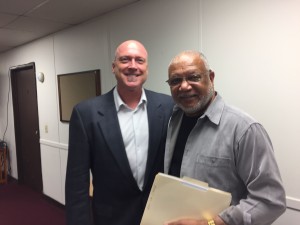Jesus says, “Bear much fruit.”
What does it mean to be fruitful?
John 15:8 speaks of “bearing much fruit.”
By this my Father is glorified, that you bear much fruit and so prove to be my disciples.
People can see we are following Jesus because they see the results of what we are doing. But, what is it that we are doing? What is ”fruit?”
“Fruit” is:
- Bringing joy
- Helping out
- Connecting
Bringing joy to people where they are at, helping out people who are having problems, and connecting people, who are receptive, to Jesus and his followers.
Your fruit then, is measured by the joy you start in others lives, the help you give, and the invitations you make for someone else to connect with and follow Jesus, too.
We bear fruit best when it is within the context of living life with the people who are already part of our extended family. Who do you ”do life” with? This could be called your,
“Who?”
We bear fruit best when we have a shared mission together. Your mission could be called your,
“What?”
So, the way Jesus designed it, within any congregation, you have smaller communities of people (The ”Who’s”) sharing life together and bringing joy and help in specific settings where they live and spend their time.
Your setting will be the neighborhood you live in and/ or the networks of people you connect with. The network can be a workplace, school, your kid’s little league, etc.
Examples:
Neighborhood
In Capernaum, Jesus joined the extended family (“oikos,” in Greek) of Peter, Andrew, James, and John. They even lived in the same family compound.
Network
When Matthew met Jesus in Capernaum and chose to follow him, he immediately had Jesus and the other disciples meet his fellow tax collectors at his home.
So, Christians grow best at bearing fruit when they are living life within an extended family, and intentionally sharing a mission together.
If you want to grow best as a follower of Jesus this starts with two questions:
1. Who’s your ”Who?”
2. What’s your ”What?”
Now, how does a typical church function?
Not like this.
The typical church functions in another way. There are four stages in increasing opportunities for fruitfulness, and we will see that most congregations stop after stage two.
Stage One
Someone else does mission and ministry and members support it with prayers and donations. They are not directly involved.
Example: Supporting missionaries
At this stage we start thinking beyond ourselves.
Stage Two
Church leaders (and sometimes in cooperation with other churches) plan projects of ministry and mission and invite members to get involved in the projects.
Example: spiritual retreat movements like Cursillo
At this stage we think beyond ourselves and personally get involved, on occasion. This is good stuff, but almost all churches stop their fruit-bearing opportunities here.
Other congregations will begin to form into communities of people on mission together locally moving into,
Stage Three
Church leaders invite members and others to join them in doing mission and ministry outside the congregation on a regular basis. The congregations provides support.
Example: Group from church that works at a local public school providing tutoring and mentoring.
At this stage we are personally involved in an ongoing opportunity to bear fruit and grow in our faith right where we live.
Stage Four
Members themselves who have been trained in leadership, join together in their neighborhoods and/or networks to do mission and ministry, working out of their own resources.
They have a “who” and they have a “what.” This is the primary model of Jesus and the early church.
Example: House Church type group with a mission to reach out to neighborhood teens.
So you see, all four stages are going on all the time in fruitful congregations. In order for Christians to grow in their fruitfulness, stage one is a start, stage two is learning to get “hands-on” experience, stage three is experiencing this “missional” lifestyle under the congregation’s leadership and support, and stage four is the tipping point, exponentially expanding the reach of the Lord in people coming to faith and in the needs of the city being met.
Stage four is the church Jesus envisioned. He knew you don’t just start there, and so he trained his disciples to move through these stages and eventually lead the movement into neighborhoods and networks. His training followed a similar pattern to the four stages of mission and ministry.
Stage One: I Do/ You Watch
Jesus brought healing, cast out demons, and proclaimed the Kingdom of God while living with his disciples and they watched what he was doing.
Stage Two: I Do/ You Help
Jesus would have the disciples watch what he was doing and invite them to participate behind the scenes like when he had them figure out how to get food to feed the crowds.
Stage Three: You Do/ I Help
The disciples are sent out to bring healing, cast out demons, and proclaim the Kingdom. Jesus gives them evaluation and insight when they return.
Stage Four: You Do
Jesus ascends to heaven, the Holy Spirit fills the disciples, and they begin recruiting others to invest in and disciple, doing the same things as Jesus did with them. The influence of the church grows exponentially.
This is the system Jesus designed to transform the world. If it’s good enough for Jesus…


